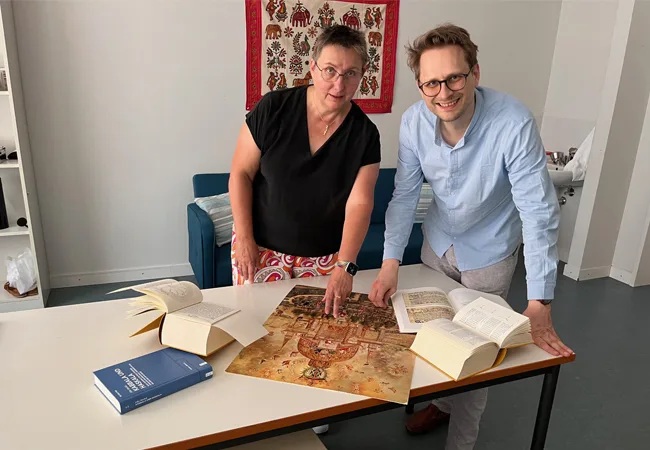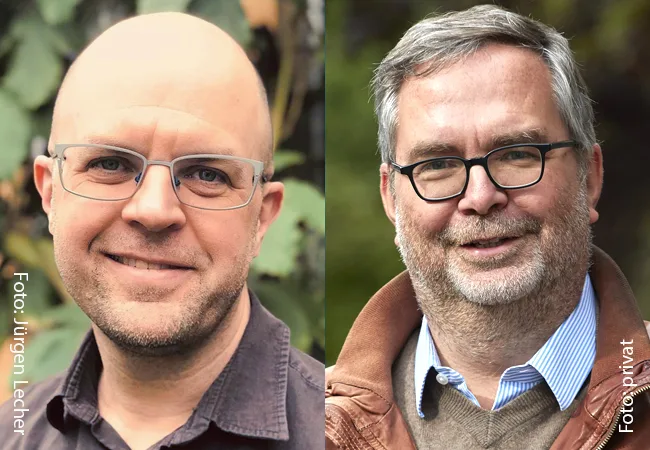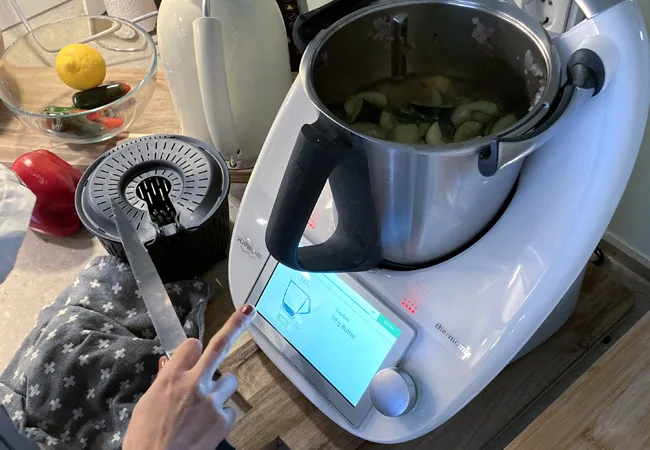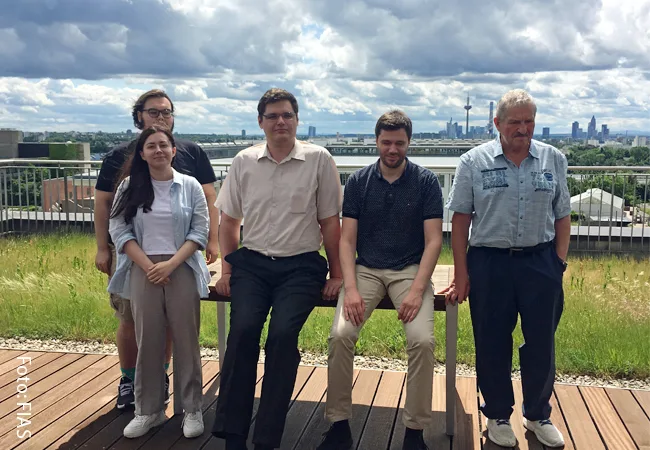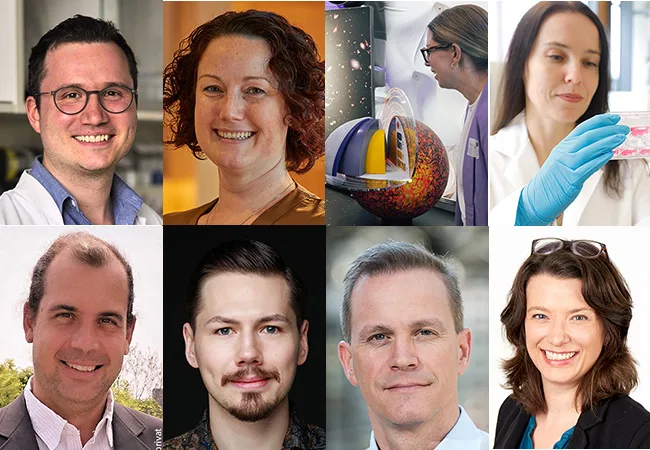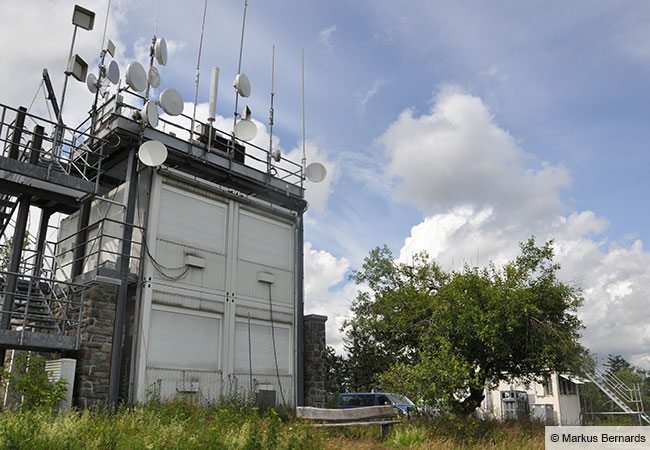Goethe University Frankfurt is applying for the upcoming round of the Excellence Strategy of the German federal and state governments with four new clusters on the following research topics: Trust in conflict (ConTrust), infection and inflammation (EMTHERA), the origin of heavy chemical elements (ELEMENTS), and cellular architectures (SCALE). These applications bring together the competencies and pioneering ideas of Goethe University Frankfurt with those of colleagues in the Rhine-Main Universities (RMU) alliance and additional partners from four major non-university research organizations. The Cluster of Excellence “Cardio-Pulmonary Institute” (CPI), first set up in 2019, will submit a full proposal next year.

Getting to grips with science communication
Anyone sharing an elevator with a scientist from the ELEMENTS cluster project who asks what the 100 researchers are working on will probably be told: “We want to know where gold comes from.” At first, this might sound a little strange because, unlike the gold rushes of the past, it is not about finding gold, but rather about understanding how it is formed. This probably occurs during something called a kilonova, that is, when two stars collide and merge. Scientists can calculate, observe and measure such collisions in space from Earth, and certain features can be reconstructed – on a miniature scale – in particle accelerators. The physics behind this is highly complex: It has to do with the inner workings of atomic nuclei and neutron stars, the densest stars of all. And it is not just about gold but about all heavy metals, such as lead, silver, platinum and uranium.
A challenging topic
For laypeople, this might seem fascinating and yet off-putting at the same time. After all, many of us only know physics from what we learned at school or from TV documentaries chanced across while zapping through the channels late at night. “Most people have at some point heard of atoms and elements, and some of them are familiar with the mnemonic ‘My Very Eager Mother Just Served Us Nachos’ for remembering the planets in our solar system,” says Phyllis Mania, who has been responsible for science communication in the cluster project since early 2022. “But ‘neutron star’ or ‘decay chain’? These terms only mean something to very few.” Mania believes this is where the challenge lies for science communication in the ELEMENTS project because even physics scholars themselves are sometimes unable to keep up with more specialized topics. “That’s a challenge for science communication, but also a huge opportunity because we can also use the situation to our advantage: Since people don’t feel the pressure of having to be familiar with the topics, they are often very open and curious towards them.”
It is with a view towards engaging the public that Mania and ELEMENTS spokesperson Luciano Rezzolla developed a model of a neutron star as a hands-on exhibit. The model is 50 centimeters in diameter and cut open so that you can see the inner layers, which can be removed individually. In space, such a neutron star is an incredibly dense object, in which the masses of one to two suns are pressed together in a sphere with a diameter approximately that of Frankfurt. On Earth, a sugar cube composed of this matter would weigh as much as the whole of Mount Everest, and when two of these neutron stars collide, so much energy is released that even heavy elements – such as the gold mentioned above – can form.
Making physics tangible

The model of the neutron star was shown to a broader public for the first time at Frankfurt’s “Night of Science 2023”, along with the question posed to visitors: “Have you ever touched a neutron star?” It attracted a lot of attention, including a father and his young son, two high school kids, a group of university students or a retired couple, and encouraged them to ask further questions. “As a hands-on object, our neutron star manages to make the very abstract physics behind it literally tangible,” says Rezzolla. “Our neutron star is an ‘eyecatcher’ and a ‘door opener’ for many very interesting conversations: Questions are sometimes put to us, especially by children, that are quite tricky even for us experts.”
The neutron star has meanwhile made several other “appearances”. It was on show at the Open Day of GSI Helmholtz Center for Heavy Ion Research in Darmstadt, part of the roadshow “Universe on Tour” in Hofheim organized by the Federal Ministry of Education and Research, and also was a special feature of the hands-on exhibition at the science festival “Highlights of Physics” in Kiel. Phyllis Mania – and, where possible, researchers from the cluster – accompanied the star on its travels.
ELEMENTS has lots of other things in store for its neutron star: A first online version (so far only available in German and English) is already available on the cluster’s website. In the future, the neutron star will also visit schools “live”, primarily in places with no university nearby. “Our main focus here is on young people and how to encourage them and promote their talents,” explains Rezzolla. “We want young people – particularly girls – to find our enthusiasm for physics infectious, and perhaps we can motivate some of them to study physics or natural sciences later on.”
ELEMENTS
Anyone interested in understanding why there are heavy elements in the Universe needs to explore neutron stars, kilonovae and gravitational waves. With this goal in mind, around 100 particle physicists and astrophysicists have joined forces in the ELEMENTS cluster project.
Scroll-Story des Neutronensterns
Universe on Tour
Highlights der Physik (in German)



